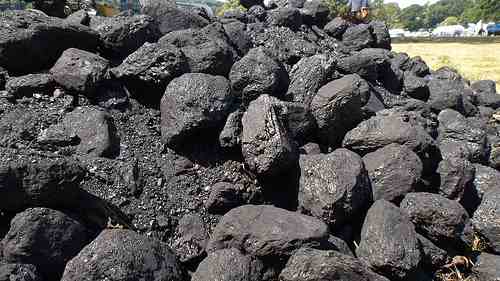

Environment
Asian Coal Boom: Climate Threat or Mirage?
Reports of a ‘coal boom’ in Asian Tiger economies are wide of the mark, report concludes
Claims that Asia is on the verge of a huge expansion in coal burning for electricity generation are incorrect, says a new report.
The report, Asia’s Tigers: Reconciling coal, climate and energy demand, argues that the Asian Tiger economies with the world’s four biggest coal power project pipelines, China, India, Indonesia and Vietnam, are likely to build far less than half of their current planned coal plants.
The four ‘Asian Tigers’ have 1,824 plants either in planning or under construction – more than two-thirds of the world total. But the report concludes that the number actually built in the next five years will fall far short of 1,000 plants, and is likely to lie in the region of around 500.
In addition, the proportion of time for which coal plants in both India and China are actually being used is falling, so increasing capacity does not necessarily mean increasing coal-related emissions. In China, coal burning is falling even as new plants come online.
The report’s author Gerard Wynn, consultant at GWG Energy, said: “These findings suggest that claims of an Asian coal boom that will derail climate change pledges made at the recent Paris summit are wide of the mark.
“In fact, the evidence suggests that the shift away from the dirtiest fossil fuels in favour of cleaner forms of energy is happening much faster than anyone could have expected.
“The report’s assessment of new capacity that will be built may even be an over-estimate once the Paris Agreement comes into effect, as it will further restrict financing for new coal projects.”
The report identifies a number of factors that are likely to constrain the number of coal plants built:
- Worldwide, from 2010-2015, shelved or cancelled coal power proposals out-numbered completed power plants by two to one. For India, the ratio was four to one, with 390 GW cancelled since 2010 compared with 98 GW completed;
- Both India and China have built more plants than they need, leading to plants being used for less and less of the time, which in turns reduces profitability. In China, the utilisation rate fell from 60% in 2011 to below 50% last year; and overall coal burning fell last year, even as coal-fired capacity expanded. For India, the load factor has fallen from a peak in 2008 of above 78%, to below 65% last year, and this trend in falling utilisation rates is likely to continue. This reduces the economic case for new build;
- Concern over air pollution in the four Asian nations, especially China and India, are prompting governments to enact curbs on coal use, including India’s carbon tax on coal;
- Policy shifts in these countries will further constrain coal-fired power generation. For example, China’s domestic targets unveiled in the run-up to the Paris summit imply the building of an additional 800-1,000GW of nuclear, wind, solar and other zero-emission generation capacity by 2030;
- The successful conclusion of the Paris climate summit last December is expected to accelerate existing investments in energy efficiency and low-carbon generation, and also restrict available financing for global coal projects. The Paris Agreement confirms that $100bn per year will be available for developing nations, much of which will assist them to enact their full climate and clean energy pledges. Vietnam announced that as a result of the agreement it is reviewing its coal expansion plans.
Richard Black, director of the Energy and Climate Intelligence Unit (ECIU), said: “This report belies the notion that coal will be forever King in Asia, further undermining the already spurious argument that there’s no point in countries such as the UK reducing carbon emissions because cuts will be obliterated by China and India’s coal burning.
“It’s worth noting too that money is moving away from coal, with the world’s largest private company Peabody hovering on the edge of bankruptcy and investors such as JPMorgan Chase and Norway’s sovereign wealth fund pulling out of coal.
“Asian countries will build new some new coal-fired power stations, but lack of finance, air pollution, the growth of low-cost renewables, the Paris factor – all suggest that the total will be far less than the headline figures imply.”


 Environment9 months ago
Environment9 months agoAre Polymer Banknotes: an Eco-Friendly Trend or a Groundswell?

 Environment11 months ago
Environment11 months agoEco-Friendly Home Improvements: Top 7 Upgrades for 2025

 Features8 months ago
Features8 months agoEco-Friendly Cryptocurrencies: Sustainable Investment Choices

 Features10 months ago
Features10 months agoEco-Friendly Crypto Traders Must Find the Right Exchange





























